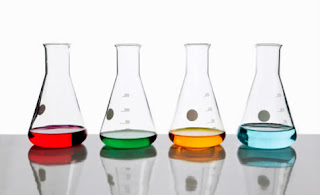What Is Physics?
Physics mainly deals with motion, energy, force and matter. It is one of the fundamental branches of Science. Physics is based on a number of central theories from which everything else develops.
How to Study Physics?
From my point of view Physics is very much truly beautiful subject. It is the most fascinating and awe-inspiring subject in the world. But majority of physics students think that physics is one of the difficult subjects in the world. Due to lack of concentration in class most of the students are unable to solve the mathematical integration of Physics. So I want to share some few tips for effective participation in Physics Tuition Class.
1) Follow the classes very carefully.
2) Read the introduction and the summary of the relevant chapter and look at the section headings and subheadings. Try to solve the mathematical problem for every chapter.
3) Make notes for new terminology, general laws, and new units of measure.
4) Before the beginning of class please study the whole chapter in advance so that you will follow the new terminology or new thoughts which will be discussed in class.
5) Do more practice in your home and feel free to ask to your teacher.
6) Ensure you can answer all points mentioned in the syllabus to the level required by the verb used.
7) Always follow your book and make a study copy.
Why Private Tuition?
If your aim is to develop your knowledge and aptitude in a particular field, classroom training is not proper solution. In a classroom one teacher may be faced with around thirty pupils, each with different abilities, different rates of learning, and individual strengths and weaknesses. So it is very much unfortunate to handle all these students in a good manner. Compared to the conflicts of the classroom, private tuition is very much effective for mediocre students, which are unable to concentrate their minds while being in a class.
Why Miracle Learning Centre?
Miracle Learning Centre Pvt Ltd specializes in Science and Mathematics. Other than Chemistry, Physics is another Science subject that Miracle is strong in. Physics concepts are not easy to explain and not all teachers can explain well. Physics concepts are not easy to explain and not all teachers can explain well. All our Physics teachers are NIE trained, ex-school teachers who explain concepts very clearly and are able to give examples to elaborate the Physics concept. Physics teachers need to be very well versed in the subject to be able to explain the subtle differences in the topic. They will also highlight what to take note of and to be precise in your answers and calculations.
Learn About Our Physics Teachers:
Profile of Mr Wong
– Mr Wong obtained his PGDE(merit) from NIE and was previously with Fairfield Methodist Secondary School. With 10 years of school teaching experience, he believes that the teacher’s pedagogical style is crucial in helping students achieve academic success.
Therefore, the instructional scaffolding provided must be intentional and purposeful. A experienced teacher who explains concepts very well.
Profile of Ms Ong
– Ms Ong is an ex-secondary school science teacher for 5 years, and work on improving the academic results of students and nurturing an environment that promotes creativity and innovation within individuals. She is experienced in providing class tuition for lower Sec Science/Physics/Chemistry/Mathematics for more than 10 yrs.
Miss Ong has a Bachelor of Applied Science with Merits (Materials Engineering) from Nanyang Technological University of Singapore(NTU) and a Diploma in Education (Post-Graduate) Secondary from National Institute of Education(NIE).
Profile of Mr Lim
– Mr Lim is an ex-secondary school teacher with more than 12 years of teaching experience. He specialises in Chemistry and Physics (secondary levels).
A very patience teacher whom guide students through detailed step-by-step approach to problem solving as well as engaging in discussion/dialogue format of presentation in class room experience.

















































